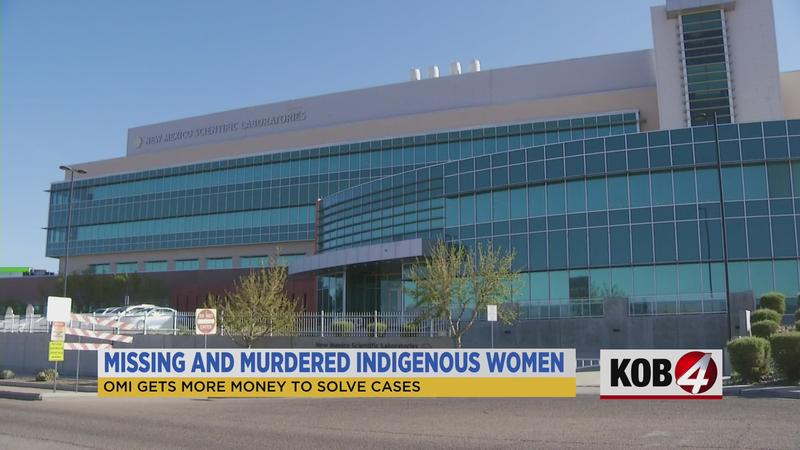OMI anthropology lab to focus on MMIW cases, expand research with new federal funding
ALBUQUERQUE, N.M. — Solving Missing and Murdered Indigenous Women cases has received more focus in the last two years and the Office of the Medical Investigator has also received additional funding to solve more cases.
The OMI’s anthropology dry lab has many brown bags containing bones and DNA samples waiting to be identified and returned to loved ones.
"New Mexico’s a big state with a lot of empty places and there’s a lot of possibilities for people to be missing for an extended period of time and decompose," said Heather Edgar, a forensic anthropologist. "At that point, a traditional autopsy isn’t going to be very helpful because the things that we look at, like lungs or livers, those things are gone."
This is where anthropologists come in.
"You can think of it as an autopsy of the skeleton," Edgar said. "We learn what we can about that individual to figure out how they died, why they died, where they are and, many times, who they are – so that’s what happens in this lab."

Solving those cases, especially MMIW cases, however, has had its own set of obstacles.
"Anthropologists have always studied Native Americans but they’ve studied them in the prehistoric past," Edgar noted, "and that has set up a real disconnect between the Native American community and anthropology – to where Native Americans have a lot of really good reasons not to trust anthropologists."
This distrust has meant there is not a lot of good data to solve these cases.
"All those studies that we’ve done on prehistoric Native Americans, we don’t have any understanding whatsoever of how they relate to contemporary Native Americans – and that’s the population that we need to serve," Edgar stated.
U.S. Sen. Martin Heinrich hopes $374,000 in new federal funding can help with gathering more accurate data so UNM and the OMI can improve on the research they’ve done so far to make strides in ensuring MMIW cases get solved.
"The issue of missing, murdered Indigenous women and girls is something that hasn’t gotten the attention it needs to get if we’re going to break the cycle of violence," U.S. Sen. Martin Heinrich said. "UNM with their background in forensic anthropology is uniquely poised in the country to help make progress on the issue of missing murdered Indigenous women and girls."
"Our research that we’re working on right now is to improve that identification so that, when a skeleton comes in, we can do a better job at estimating it to be Native American and, hopefully, help narrow the pool of missing persons that individuals will be compared to and get that body returned to families sooner," Edgar said.
The lab has already created a research database using information gathered from CT scans.
"We’re hoping to use this additional funding to bring in machine learning and artificial intelligence techniques that will improve the work we do, allow us to serve more people, serve them faster to bring more students in – who can work on it to really use cutting-edge technology on big data to solve really core questions," Edgar said.
The knowledge they acquire will not only help New Mexico but the rest of the world. Edgar says there are over 800 users, in 50 countries, who are using their database to improve research on various things related to human anatomy.
The lab has unsolved cases going as far back as the 1970s. As they recently did with a case from 1985, the lab is looking forward to figuring out unsolved cases and bringing closure to families.
"We’re asking some Native American scholars – who are members of that community but are also familiar with public health, science or issues related to Missing and Murdered Indigenous Women – to advise us and help us make sure that we’re asking questions the community is interested in and that we’re doing so in a respectful way. And all of those components as an outsider, I wouldn’t be able to do by myself," Edgar said.